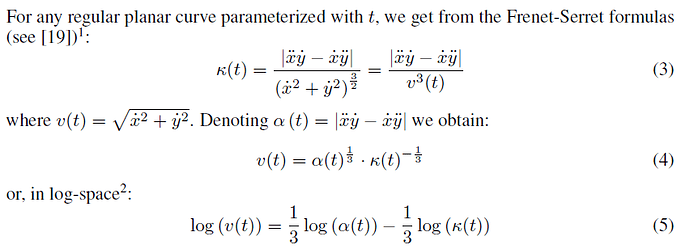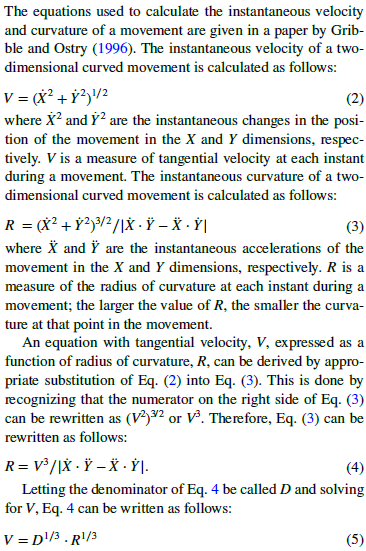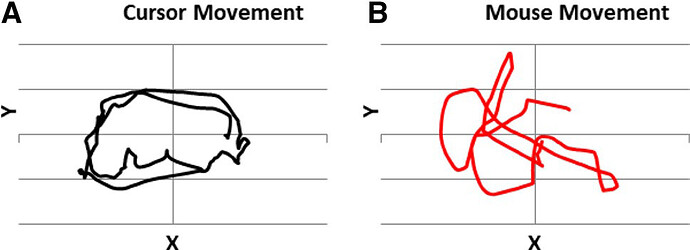Rick, I have not said (and seen others saying) that the pure mathematical analysis – the playing with equations – of yours and Maoz et al were different so that Maoz et al were right and you wrong. There are same basic problem in both, but the logic around them is different. Maoz et al do not make such problematic inferences from this analysis as you do. The basic problem in both is the concept of affine velocity (A): it is not explained and understood what that concept is and where it comes from. I have tried to show that it is not a similar independent variable like velocity (V) and curvature (C) and that is why the analysis of Maoz et al is quite questionable and one should make very cautious inferences from it – like Maoz et al themselves do but you don’t. (I would like to know what other discussion their analysis has caused in Power Law research, do Adam know?)
What Maoz et al seem to claim based on that analysis is this: If there is low or no correlation between log A and log C then the power coefficient between log V and log C is (respectively) near or exactly -1/3. There is no correlation between log A and log C when A is constant. This is the known result which comes straight from the way how Pollick and Sapiro defined affine velocity. A new result which Maoz et al produced was that noise can lessen the correlation between log A and log C and thus draw the power efficient near that -1/3.
What they did not infer from that analysis is that there is a necessary mathematical relationship between C and V so that -1/3 is a “true” power coefficient between them in every possible trajectory. Here you generalize from a certain special case to all possible cases (as Martin has stated).
Affine velocity, how ever it is defined, cannot create any mathematical relationship between velocity and curvature but only between itself and both velocity and curvature taken together. Just similarly as the area of a rectangular does not create mathematical relationship between the width and height of that rectangular. Perhaps I should try to show this with simple diagrams but I am sorry that I have no time for that now.




